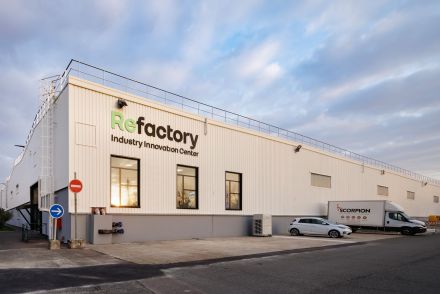A French company specializing in converting bicycles to electric, Virvolt relies on Renault and its Flins factory to assemble its engines, which we visited. Go behind the scenes of the manufacture of this electric bicycle motor (VAE).
A city within the city. This is what the Renault industrial site in Flins (Yvelines), in the west of the Ile-de-France region, represents. But nothing shows that the bicycle has its place there, they are even forbidden to circulate there! The vast area of 237 hectares incorporates the historical automotive assembly lines of Losange with the 4CV, R5, Clio and still today the ZOE electric city car. But the factory now becomes the Refactory.
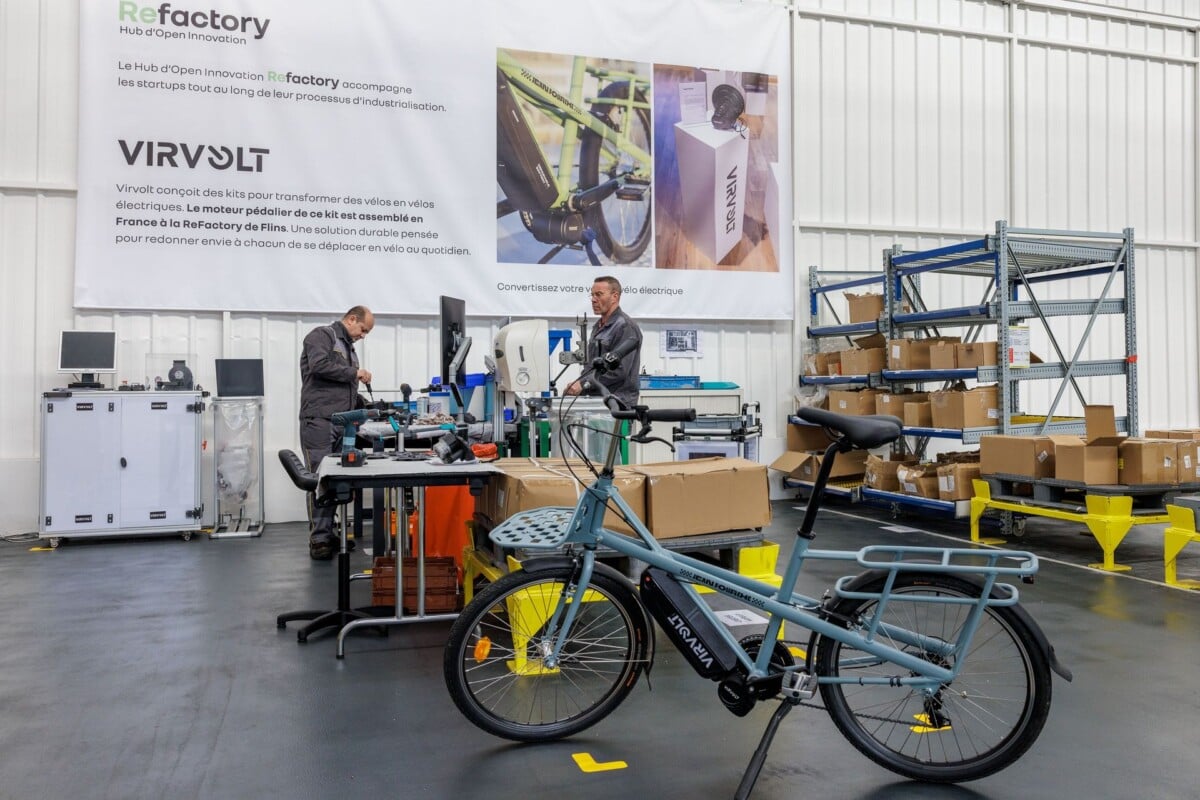
This conversion project over several years is a necessity, since the future electric R5 replacing the ZOE is migrating its assembly to Douai (North). The plant is therefore moving towards a center of activity between 4 axes: retrofitting, recycling, recharging and energy storage. But it also hosts a campus and a start-up incubator, some of which involve soft mobility. More specifically, other companies benefit from a springboard for industrialization, such as Virvolt.
The history of Virvolt and why the choice of Renault?
Initially DIYers on all types of two-wheelers, the founders of Virvolt (2020) focused their development on transforming muscle bikes into electric bikes. It was first with a kit for individuals, adaptable to the vast majority of muscle bikes (95% according to its general manager and co-founder Yvan de La Baume). The brand is now moving into second place with a central engine intended for professionals and manufacturers.
The Virvolt 900 is therefore the beginning of a new stage, but one that requires serious manufacturing and know-how, hence the partnership with Renault. It all started at the beginning of 2022, with the first exchanges between the two parties who already knew each other (the Parisian headquarters are housed in a former warehouse of the manufacturer).
Skipping the incubation stage, as mature, Virvolt therefore developed its bicycle engine for 6 months until November and its industrialization with Renault.
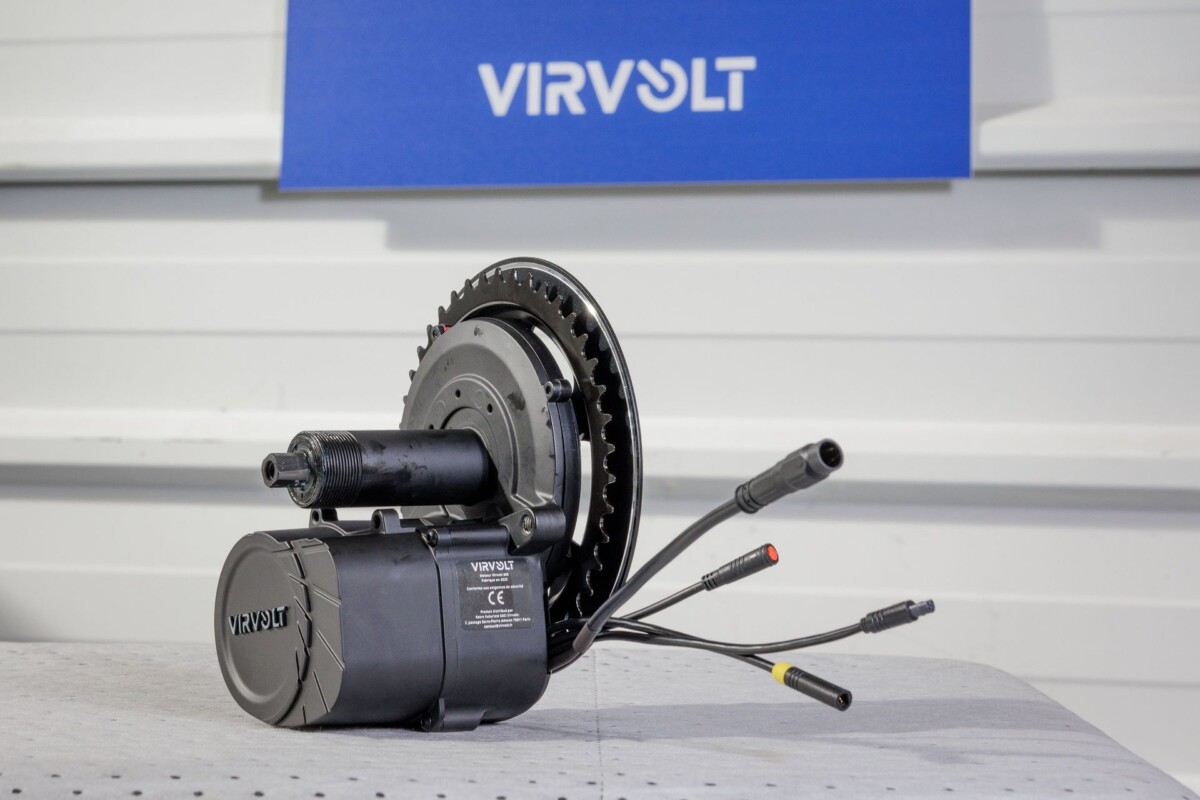
After a pre-series of 50 units, the startup has concocted a two-person team, the equipment used on the assembly line – including a homemade test bench – while receiving support from Renault and its teams of Flins for the quality of manufacture. Thanks to this, it can not only guarantee a Made in France engine (more than 45% of the added value is French, but the value of French components is lower), control of costs and deadlines, as well as reliability for the cyclists.
How does Virvolt manufacture its motor?
But concretely, how do you make a bicycle engine? Everyone has their own grub, but Virvolt operates here with a puzzle of around a hundred pieces from several countries, including the crankcase which travels from Portugal. Not everything is made on site, we are talking about assembly, even if Virvolt intends to gradually increase the local share over the next two years.
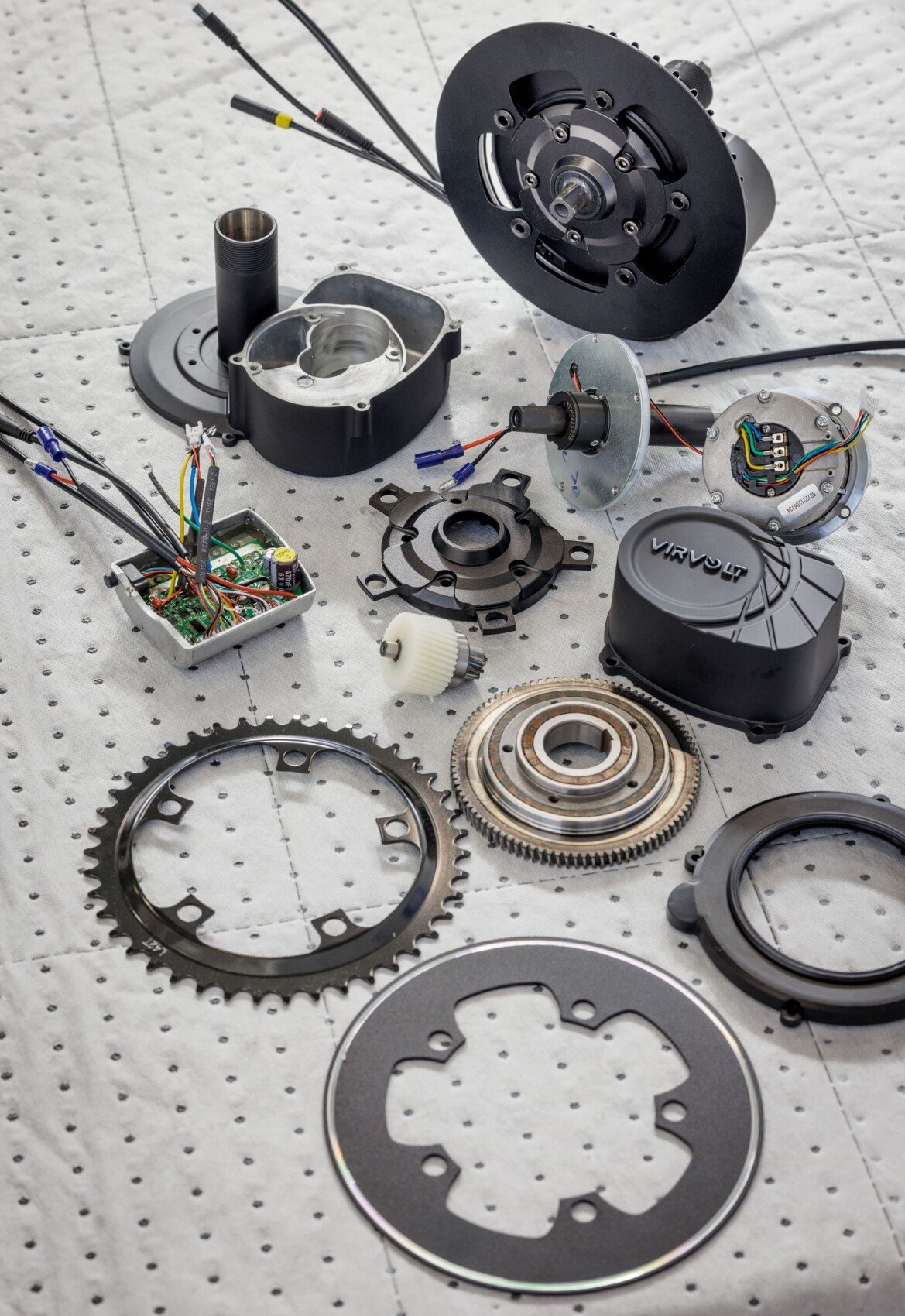
This puzzle is assembled in Flins, in a hangar at the heart of the Renault industrial site in Flins that we visited. The assembly line employs two people, each requiring 15 minutes per engine. Then the block goes through a test bench for 3 to 4 minutes, just to test the operation on the 5 levels of assistance by simulating the strength of a cyclist.

It is in this type of building that Virvolt operates – Source: Renault

Parts recovery – Source: Virvolt

Beginning of assembly – Source: Virvolt

The team is made up of two people – Source: Virvolt

It takes 15 minutes for each to assemble the engine – Source: Virvolt

Passage to the test bench – Source: Virvolt

Including conditioning, it takes 40 minutes for a single bicycle engine – Source: Virvolt
Finally, the motor is packaged in a box, either to the customer or to the headquarters in Paris where it will be integrated into the complete kit (with batteries, screen, etc.). In all, it takes 40 minutes of assembly per engine.
Objective 5,000 motors per year
Because Virvolt is still operating at low speed, around 400/450 bikes per production “burst”, with the objective of 2,500-3,000 engines in 2023. The objective is to increase to 5,000 next year, in 2024, where Renault will continue to host the French manufacturer with constant improvements (gear changes, compatibility, etc.), without forgetting its engine intended for individuals.

Because let’s not forget that the firm always thinks of the quidam wanting to electrify his bike. Yvan de La Baume recalls that 60 million muscle bikes have been sold over the past 20 years, half of which sleep in French garages or premises. The first Virvolt 500 kit has already attracted 4,000 people since the adventure began in 2020. But it is now sold out. Good news, the company will soon launch two Virvolt 500 and 750 kits, with front or rear engine, to cover all needs.
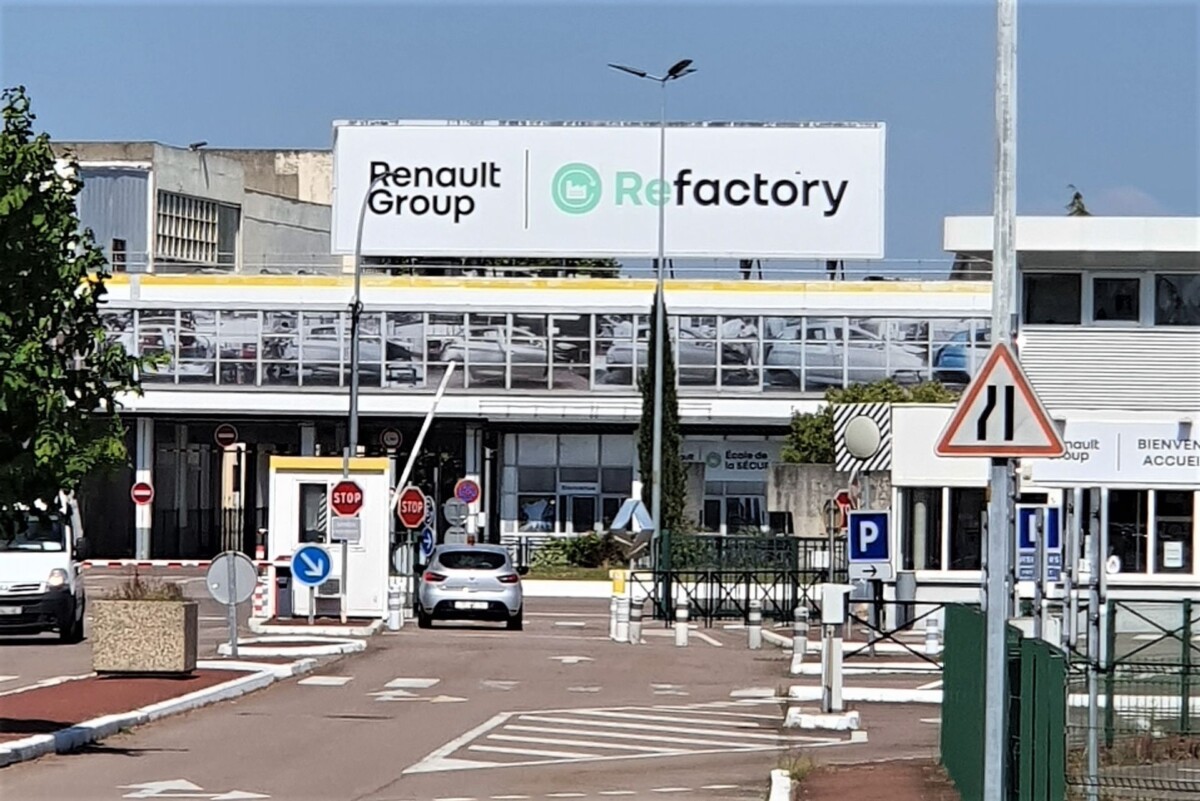
And as a motor does not go without a battery, Virvolt also wants to improve its ecosystem. Today, it comes from China but it is developed internally while being repairable. It could soon benefit from the production of cells in French Gigafactories, whether ACC via Stellantis or more logically Verkor working with Renault. Virvolt even imagines reconditioning car cells in second life, which the Refactory is already doing.
So many projects in mind, but engines already on the road (and on the tracks). We also took in hand the bike Jean Fourche “Jean Foudre” equipped with the Virvolt 900, which we will describe in a future article.
Do you use Google News (News in France)? You can follow your favorite media. Follow Frandroid on Google News (and Numerama).
